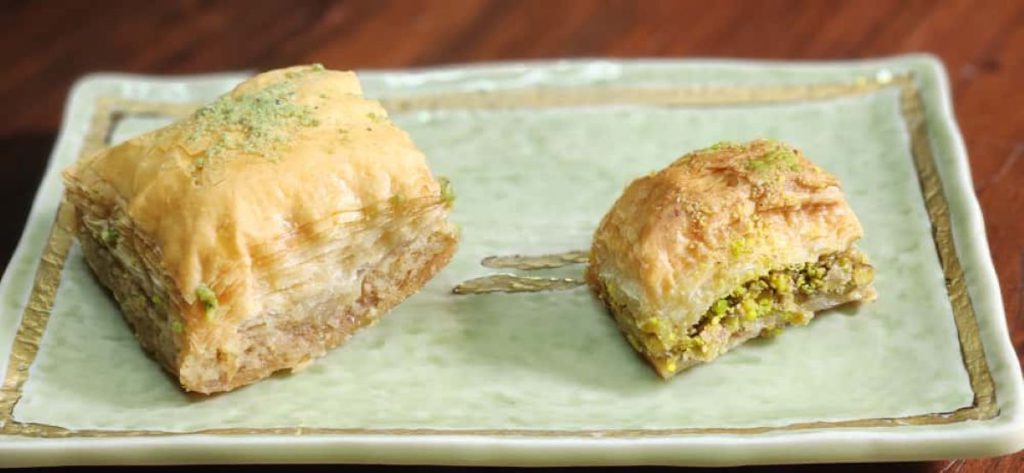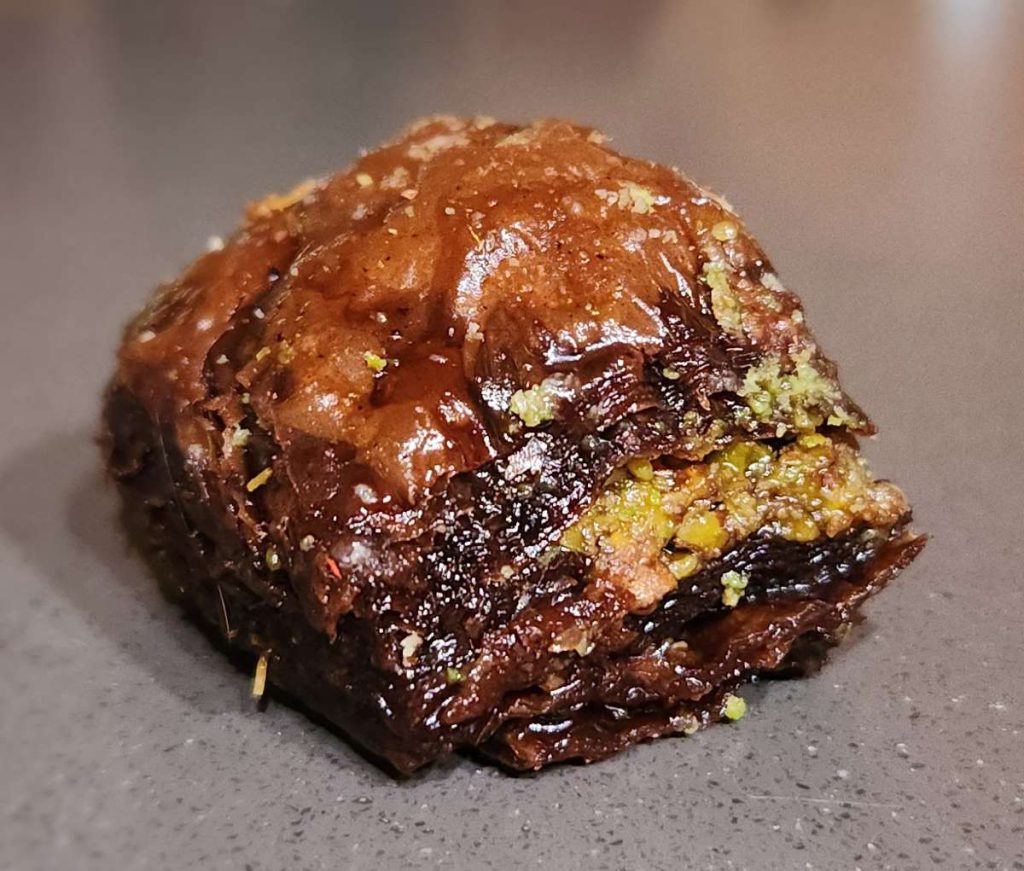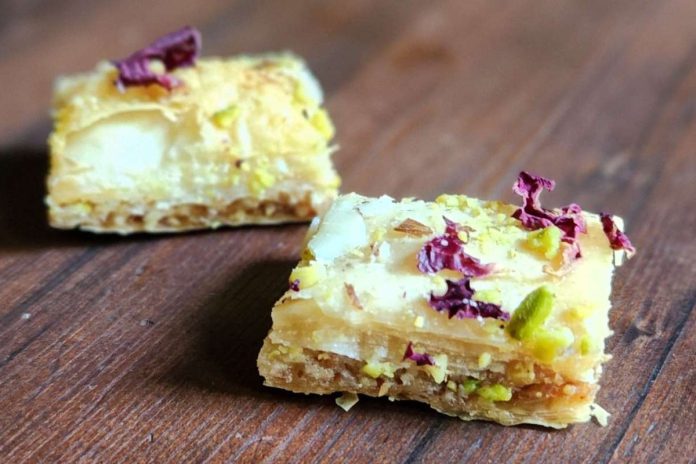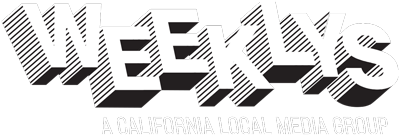Many Americans focus on Thanksgiving as the calendar moves into November, ignoring Nov. 17, a day with rich history. Queen Elizabeth I became the queen of England, the U.S. Congress met for the first time in the U.S. Capitol, the Suez Canal officially opened, President Lincoln started the first draft of the Gettysburg Address and Arnold Schwarzenegger was sworn in as the 38th California governor. It is also National Baklava Day.
The precursor to baklava is believed to have originated in Assyria around the 8th century B.C. This early version was a layered dessert made with unleavened flatbread, chopped nuts and honey, and was baked in wood-fired ovens. This style spread throughout the Middle East and parts of the Mediterranean over the centuries and began to take on regional adaptations based on available ingredients. Ottoman Empire bakers in the Imperial Topkapi Place in Istanbul around the 15th century created the crispy paper-thin layered phyllo version of baklava recognized today.
The popularity of this imperial baklava spread from Constantinople, now Istanbul, throughout the vast territories of the Middle East, North Africa, Eastern Europe and the Eastern Mediterranean. Baklava is still popular in countries such as Egypt, Algeria, Tunisia, Iran, Syria, Iraq, Bulgaria, Romania, Turkey, Greece and Yemen.

Baklava is a sweet, thinly-layered, flaky dessert. The main ingredients are phyllo
dough, chopped nuts and a sweet syrup or honey. Recipes vary from country to
country and even from region to region. Options include different spices, nuts, syrups,
fillings and shapes.
Bay Area residents can sample many different styles of baklava available at local international markets, cafes and restaurants that make and/or sell their own versions. It is important to note that there are so many variations of baklava that styles purchased from an establishment of a particular country or region might seem to have more in common with versions from other regions.
Turkish styles of baklava are probably the ones found most commonly in Bay Area cafes and restaurants. Pecans, almonds and hazelnuts are used in some regional Turkish recipes; however, standard styles use walnuts, pistachios or a combination in the filling. Mr. Mikey’s Country Store and Deli in Fremont sells a combination one, and The Souk Mediterranean Market in San Ramon offers both walnut and pistachio baklavas.
Turkish baklavas come in many different shapes connected to traditional regional recipes. Sultan’s Kebab offers two different pistachio baklavas, one carrot-shaped and one rectangular at its locations in Pleasanton, Livermore and Danville.


Greek styles of baklava are also very popular. Many Greek recipes call for brushing the phyllo with olive oil. Walnut is the most common filling, but almonds and pistachios are frequently added. Honey-based syrup is often used to sweeten Greek baklava. Many Greek recipes call for 33 layers of phyllo to signify the years of Jesus’ life. Nick the Greek, with multiple locations throughout the Bay Area including Fremont, Union City, Castro Valley, Hayward and San Leandro, has a traditional Greek walnut and honey baklava on its menu.
Afghan baklava typically uses a mixture of pistachios and walnuts for the filling. It is often sweetened with orange blossom or rose water syrup, or cardamom flavored syrup which gives it a delicate floral taste. De Afghan Kabob House in Fremont offers just such a dessert.
Lebanese baklava is known for using almond for the filling but some recipes call for cashews. Cinnamon is a spice commonly used; however, cardamon and ground clove are also options. It is generally lighter and less sweet than other regional baklavas. Bad Morning Bakery at the San Ramon Farmers Market sells a tasty Lebanese style baklava.
There are variations of baklava that incorporate cream, figs, sour cherries or dark chocolate into the dessert. Dark chocolate baklava is common throughout the Middle East, North Africa, Eastern Europe, the Balkans and areas of the Mediterranean. The chocolate gives the baklava a distinctive dark color, a denser texture and a slightly bitter flavor that complements the sweetness of the syrup.
Bemo Cafe in Berkeley, an Algerian/North African bakery, offers a number of different regional baklavas and a dark chocolate variety. Bab Al-Yemen in Oakland serves another style of chocolate baklava.
There are many other places around the Bay Area that sell baklava. Whether they are a bakery, coffee shop, restaurant or market that specializes in foods from any of the countries or regions listed above, it is a good bet that they offer baklava. Visiting one of those establishments or any of those mentioned above on National Baklava Day will add another event worth remembering to Nov. 17.
Daniel O’Donnell is the co-owner and operator of an organic landscape design/build
company in Fremont. Chrysalis-Gardens.com




